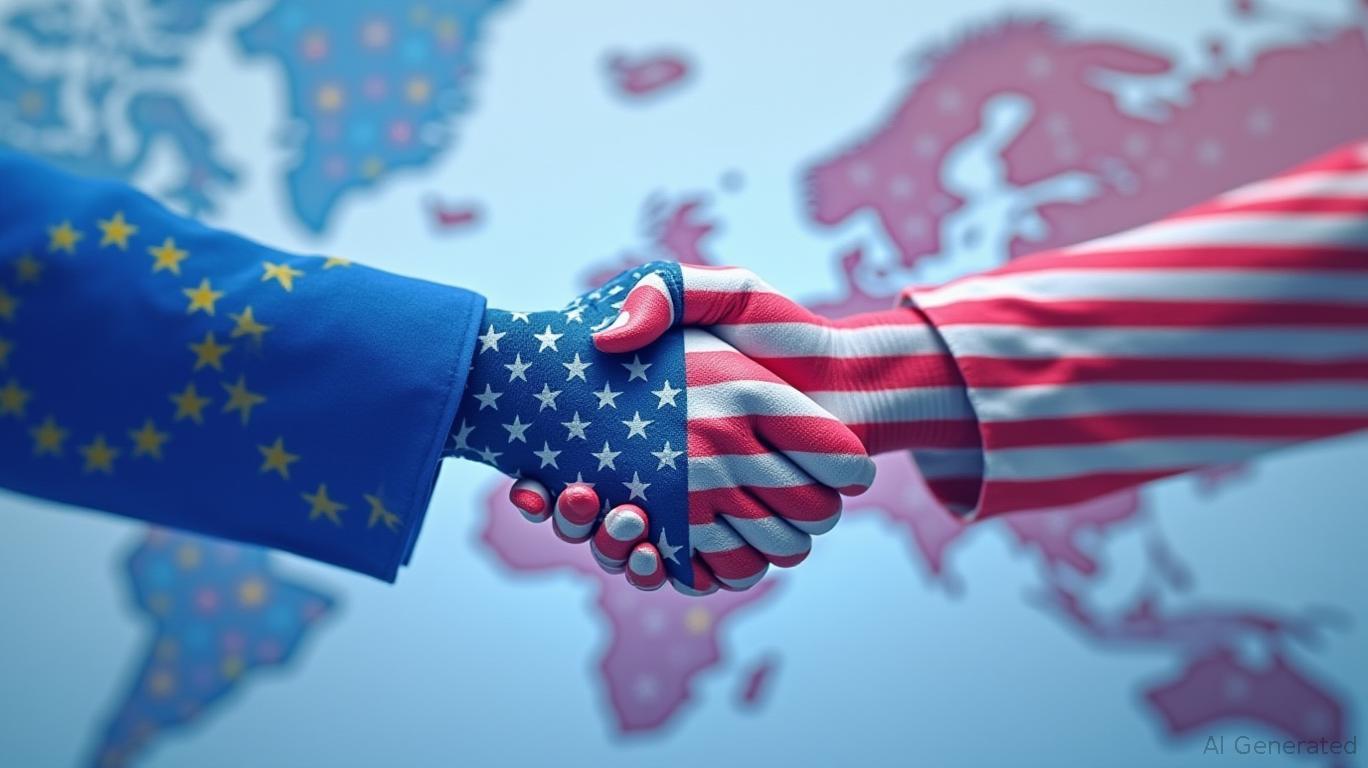Crossing the Atlantic Divide: How EU-US Trade Talks Could Reshape Global Markets
The EU and the US have been locked in a high-stakes tariff negotiation for months, with the July 9 deadline looming as a critical pivot point. While technical discussions continue, the unresolved tensions over tariffs, regulatory standards, and trade balances threaten to derail a potential deal. For investors, this prolonged stalemate presents both risks and opportunities to capitalize on sectors positioned to thrive—or falter—in either scenario.

The Current Standoff: Tariffs as a Double-Edged Sword
The core of the dispute revolves around asymmetrical tariff structures and the $161 billion EU trade surplus with the US. Washington's abrupt hike of steel and aluminum tariffs to 50% on June 4 has escalated pressure on both sides, while the EU's proposed “zero for zero” deal—aiming to eliminate industrial tariffs—remains on the table. However, non-tariff barriers, such as the EU's bans on hormone-treated beef and chlorinated chicken, and the US's insistence on dismantling the EU's VAT, continue to stall progress.
This data visual will show how industries like automotive and steel—directly impacted by tariffs—have reacted to policy shifts. For instance, Ford's stock may have dipped on the steel tariff news, while EU-based automakers like VW might benefit if a deal reduces their exposure to US tariffs.
Strategic Opportunities in a “Zero for Zero” Deal
If negotiators broker an agreement, sectors like automotive and technology stand to gain the most. A removal of auto tariffs (currently 10% EU-to-US and 25% US-to-EU) would boost companies like Tesla (TSLA) and BMW (BMWYY), enabling smoother cross-border sales. Tech firms reliant on EU-US data flows, such as Microsoft (MSFT) and SAP (SAP), could also benefit from reduced regulatory friction.
Additionally, the EU's focus on closing the trade deficit via increased US service exports—particularly in tech—hints at opportunities in cloud computing and software sectors. Investors might consider ETFs like the Technology Select Sector SPDR Fund (XLK) or the iShares Global Tech ETF (IXCT).
Navigating the Risks of a Failed Negotiation
Failure to reach an agreement by July 9 would trigger a tariff escalation to 50% on most goods, a scenario likely to spook markets. Steel and aluminum stocks, already reeling from the June 4 hike, could face further declines. Agriculture exporters like Tyson Foods (TSN) or Corteva (CTVA)—targeted by EU bans on US agricultural goods—might also suffer.
Meanwhile, defensive plays could gain traction. Companies with diversified supply chains, such as Coca-Cola (KO) or Procter & Gamble (PG), might outperform due to their resilience to regional trade shocks. Investors might also consider inverse ETFs like the ProShares Short Russell 2000 (RWM) to hedge against market downturns.
The Regulatory Wild Card: VAT and Beyond
The EU's refusal to budge on VAT and food safety standards underscores a deeper clash over regulatory sovereignty. While this complicates a swift resolution, it opens opportunities in sectors insulated from these barriers. For example, pharmaceutical giants like Pfizer (PFE) or Novartis (NVS), which operate under harmonized EU-US drug regulations, may remain less affected.
Final Considerations: Timing the Trade
The July 9 deadline creates a clear inflection point. Investors should monitor diplomatic signals: a delay in technical meetings or a sudden spike in tariff-related rhetoric could signal a breakdown. Conversely, a last-minute “zero for zero” framework announcement might spark a rally in cyclical stocks.
In this high-stakes environment, a balanced portfolio—tilted toward trade-exposed sectors but cushioned by defensive holdings—seems prudent. The key is to stay agile: as the negotiations evolve, so too will the investment landscape across the Atlantic.
Investment Takeaway:
- Bullish Scenario (Deal Achieved): Overweight automotive (TSLA, BMWYY), tech (MSFT, SAP), and trade ETFs (XLK).
- Bearish Scenario (No Deal): Hedge with defensive stocks (KO, PG) and inverse ETFs (RWM).
The EU-US trade talks are more than a geopolitical tussle—they're a real-time stress test for global supply chains. Investors who parse the nuances of this standoff will be best positioned to capitalize on its outcome.

Comments
No comments yet